New Ivy League Visual Arts Building Offers Interdisciplinary Promise
The greatest power of architecture lays not in its ability to create dazzling baubles to brand international cities but in the way it shapes how we actively live our lives, revealing new possibilities and shifting our perceptions. The new Black Family Visual Art Center (VAC) at Dartmouth College, wh

The greatest power of architecture lays not in its ability to create dazzling baubles to brand international cities but in the way it shapes how we actively live our lives, revealing new possibilities and shifting our perceptions. Architecture can change how we thinking about the world around us, how we interact with space, and how we go about our daily routines. The new Black Family Visual Art Center (VAC) at Dartmouth College, which houses the school’s studio arts and media programs, demonstrates exactly this potential. Though the building is reserved and unostentatious from the exterior, the interior reveals a deep commitment to interdisciplinary artistic practice and support for personal creativity.
Funded by Leon Black (Class of 1973) (who recently purchased a version of Munch’s “The Scream” for $119.9 million) and designed by Boston’s Machado and Silvetti Associates, the center combines art studios, theaters, gallery space, and offices into one composite building. Functional spaces are arrayed around a central atrium three stories tall. There’s a lounge setup with low-slung couches in the center of the empty cavern, but the real focus is on the hallways and stairways running off the atrium on the upper floors, emphasizing the flow of people and the hum of activity throughout the building. Glass walls and partitions turn the center into a transparent beehive, an effect that should inspire students and faculty alike to get down to business, whatever that may entail.
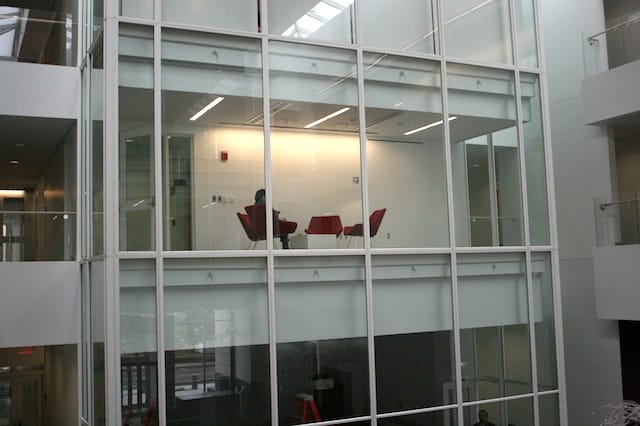
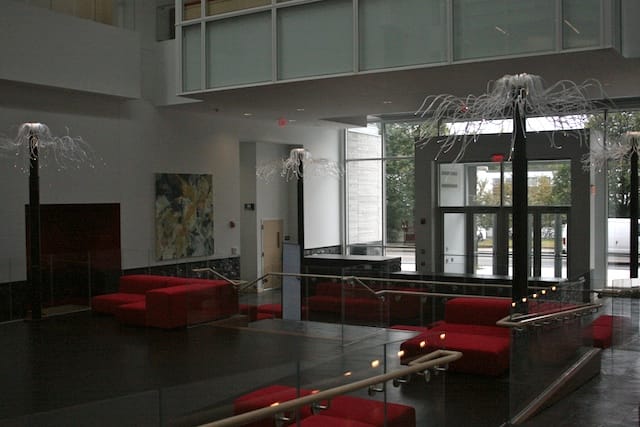
One downside of the emphasis on work and the de-emphasis on the starchitecture-driven principle of building-as-spectacle is that the VAC’s design trades dramatic architectural crescendos for mundane functionality. The relatively small, human-sized hallways are intimate and suited to the building’s use, but give off a distinct elementary school air, an impression not helped by the goofy, dorm-style octopus lights surrounding the bottom floor lounge. Is it possible for a structure to be too friendly?
Thankfully, the VAC’s diverse functionality is put to good use and serves its academic context well. Dartmouth’s new center serves a unique student population that has no MFA program but does include very active studio art and media production majors and classes; in fact, there are only 10 to 20 studio art majors per year on average. The center has a populist role: It doesn’t just serve full-time art students but is meant for everyone, from the dedicated painter heading to Yale to the finance student who desperately needs a break from economics. That democracy is apparent in the layout of the building and the non-hierarchical nature of the office and studio spaces. They are all uniformly high quality, brightly lit, and eminently accessible.
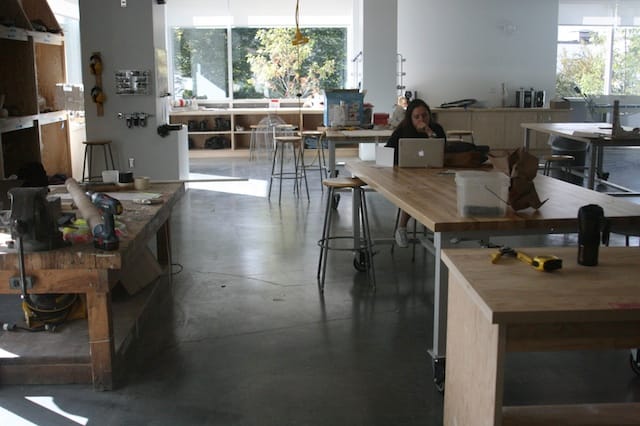
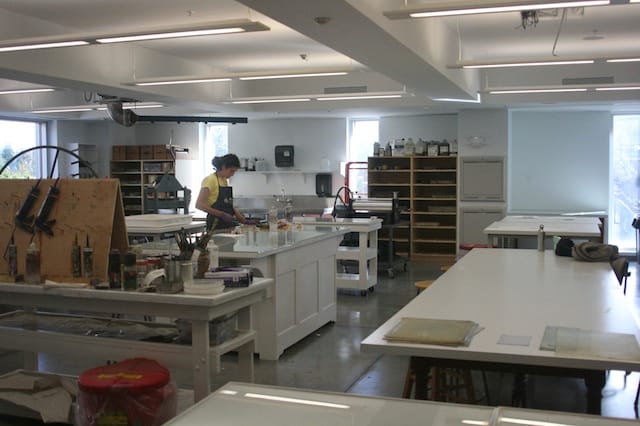
There’s an emphasis on natural light not just in the art studio spaces but in the entirety of the center as well. Masked, recessed skylights running along the sides of the atrium ceiling seem to brighten the whole space at once. The studio spaces on the upper floors feature large skylights and hallways in between workspaces often end in cutouts that face the courtyard outside the center, allowing for views of green hills and red brick campus buildings. It’s an open, free-flowing structural model of collaborative creativity that stands in contrast to buildings like Frank Gehry’s MIT Stata Center, which is inspiring in its complexity but certainly not in its usability, flexibility, or approachability.
The Black Visual Arts Center breaks down barriers between practices by placing different disciplines in close proximity. Woodworking and printmaking studios are only a short walk from digital media workstations and a full TV productions stage. On the top floor is a spacious studio with floor to ceiling windows meant for a full-time artist in residence, whose only responsibility is to make their work and be a presence in the building. More than any other aspect, the embedded professional studio will help these Ivy League students become accustomed to the idea that the arts are a practical, fulfilling career path as well as a hobby.
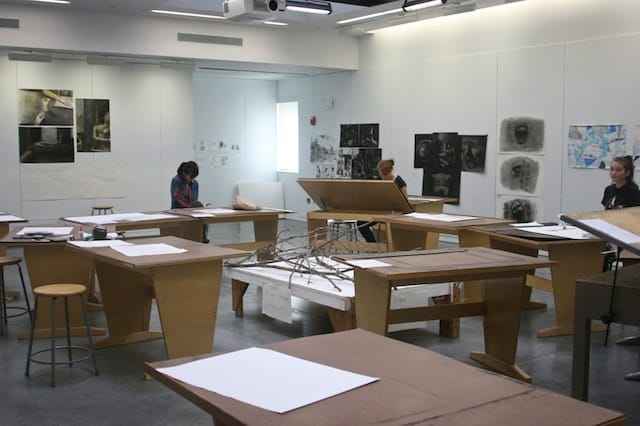

The VAC represents a renewed commitment to the arts for Dartmouth, which continues in the school’s creation of an “arts district” composed of a small courtyard, the Hood Museum (soon to be renovated by Tod Williams and Billie Tsien), and the Hopkins Center, a historic structure designed by Wallace K. Harrison. But more than being a symbol of support for culture, the VAC is an active space designed to serve a powerful function. Dartmouth has some lucky visual art students.




